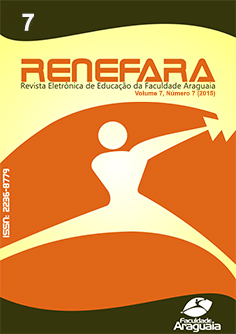ESTUDO DO COMPORTAMENTO DE VIGAS MÉTALICAS COM LIGAÇÕES PARAFUSADAS
Keywords:
aço, parafusos, estruturas de aço, flexão simplesAbstract
Este artigo tem por objetivo analisar a capacidade resistente de vigas bi apoiadas em aço constituídas de perfis tipo I laminados de abas paralelas com dois eixos de simetria, sendo dotadas de emendas com parafusos de alta resistência do tipo ASTM A325 de diâmetro 19 mm, estando os modelos solicitados por esforços de flexão simples. Todas as vigas foram ensaiadas até a ruptura, ruptura esta, apresentada fora das ligações, se mantendo íntegros tanto as chapas de ligação quanto os parafusos conectados. As vigas ensaiadas apresentaram carga de ruptura entre 73% para a viga V3L e 82% para a viga V1L com relação à viga de referência VREF que não possui ligações.Downloads
Issue
Section
License
The copyright of the published articles will be transferred to the Uniaaraguaia Magazine, allowing its subsequent reproduction as transcription and with due citation of source. In the event of acceptance and before the publication of the article, the plaintiff (s) shall write a statement formally transferring copyright to the magazine.
The author may also print and distribute copies of his article, provided that he mentions that the rights belong to the Uniaaraguaia Magazine.
Author rights include the right to reproduce in full or partly by any means, distribute this article, including figures and photographs.
By submitting originals to the Uniaaraguaia magazine, the author or authors express agreement with the following terms:
a) Authors maintain copyright and grant Uniaraguaia magazine the right of first publication, with the work simultaneously licensed under the Creative Commons Attribution license that allows the sharing of work with recognition of the authorship and initial publication in this magazine.
b) Authors are authorized to assume additional contracts separately, for non-expiration distribution of the work version published in this magazine (eg publish in institutional repository or as book chapter), with recognition of authorship and initial publication in this journal.
c) Authors are allowed and are encouraged to publish and distribute their work online (eg in institutional repositories or on their personal page) to any point before or during the editorial process, as this can generate productive changes as well as increase the impact and citation of published work.

